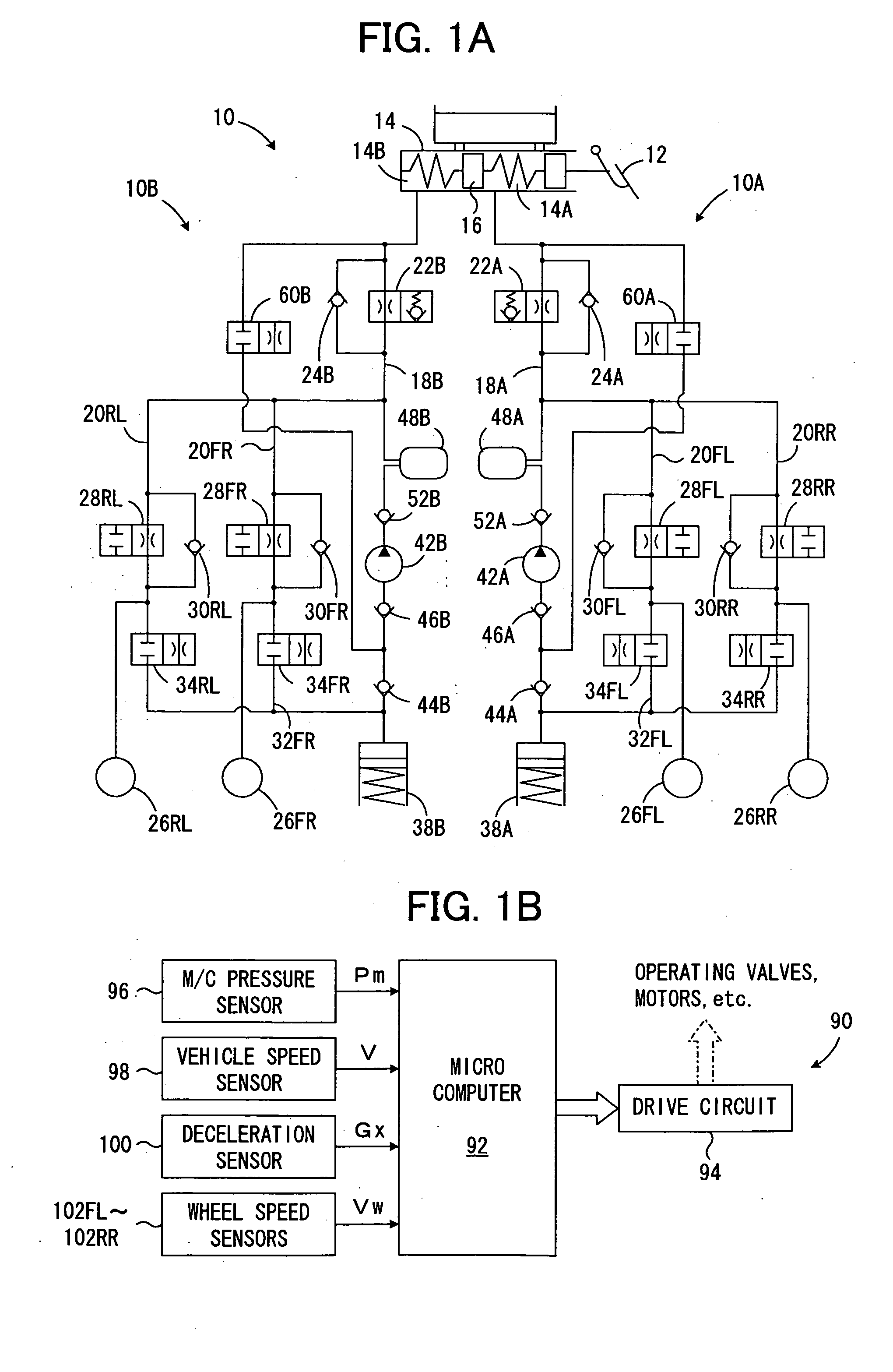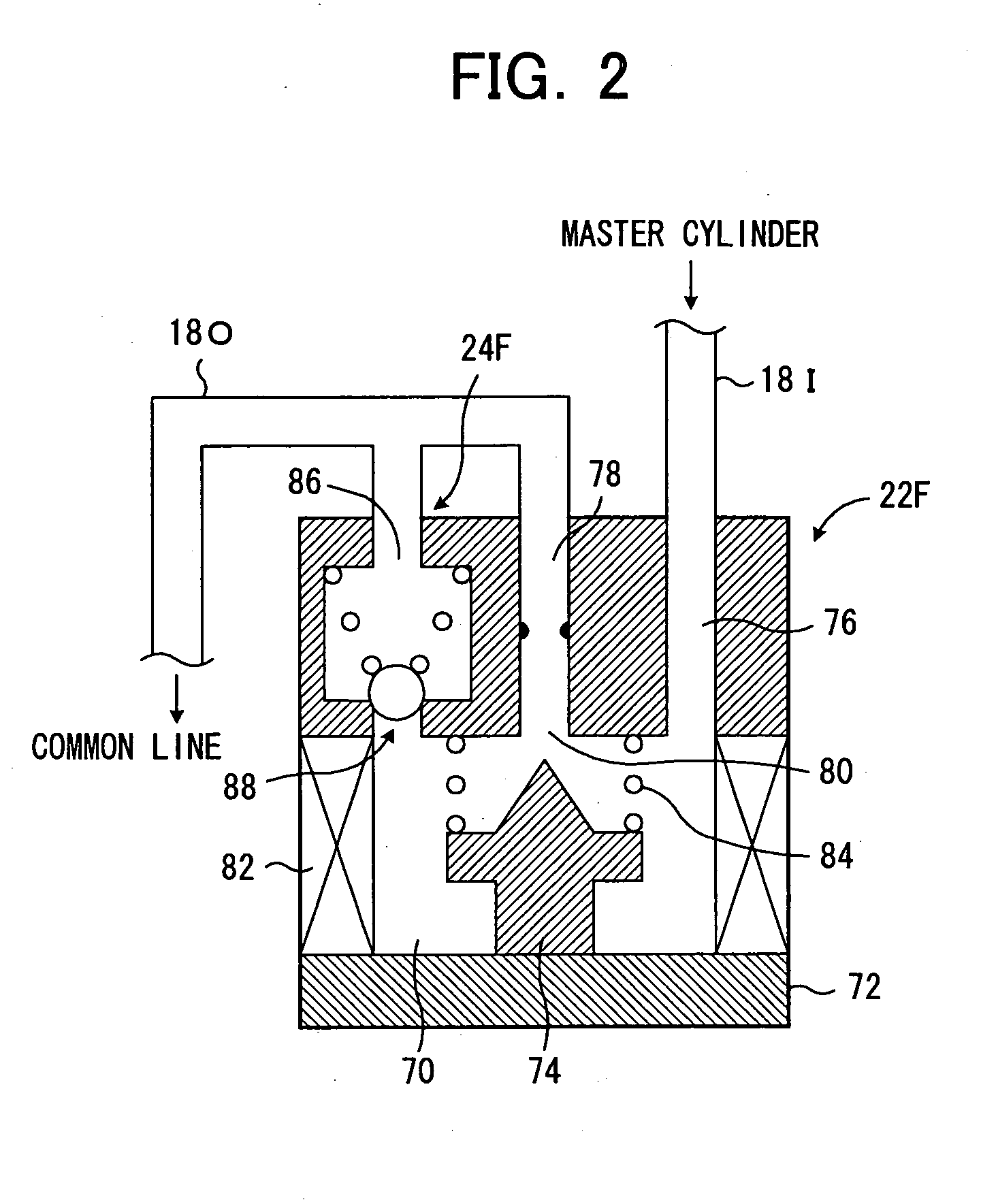Vehicle braking control device for braking force distribution
a technology of braking control and control device, which is applied in the direction of vehicle components, process and machine control, computation using non-denominational number representation, etc., can solve the problems of short total braking force on the vehicle body, front wheel is more prone to enter into the locked condition than the rear wheel, etc., to reduce the effect of braking force distribution control, prevent the braking force on the vehicle, and reduce the braking pressure on the front wheel
- Summary
- Abstract
- Description
- Claims
- Application Information
AI Technical Summary
Benefits of technology
Problems solved by technology
Method used
Image
Examples
Embodiment Construction
[0038] FIG. 1 illustrates a schematic diagram of a braking system implementing an embodiment of a control device for controlling braking force for a vehicle, enabling BFD control according to the present invention, which braking system consists of a hydraulic circuit 10 (FIG. 1A), transmitting a pressure in a master cylinder 14 (master cylinder pressure) to wheel cylinders 26i (i=FL, FR, RL, RR=front-left, front-right, rear-left and rear-right wheels, respectively) in braking force generating apparatuses provided for the respective wheels (not shown), and an electronic controller 90 (FIG. 1B) controlling brake fluid flows in the hydraulic circuit by operating solenoid valves and other components therein.
[0039] Referring to FIG. 1A, the illustrated hydraulic circuit 10 are of X dual circuit type, having two circuits, the one 10A for a pair of front left and right wheel cylinders 26FL, 26RR and the other 10B for a pair of rear left and right wheel cylinders 26FR, 26RL. It should be no...
PUM
 Login to View More
Login to View More Abstract
Description
Claims
Application Information
 Login to View More
Login to View More - R&D
- Intellectual Property
- Life Sciences
- Materials
- Tech Scout
- Unparalleled Data Quality
- Higher Quality Content
- 60% Fewer Hallucinations
Browse by: Latest US Patents, China's latest patents, Technical Efficacy Thesaurus, Application Domain, Technology Topic, Popular Technical Reports.
© 2025 PatSnap. All rights reserved.Legal|Privacy policy|Modern Slavery Act Transparency Statement|Sitemap|About US| Contact US: help@patsnap.com



